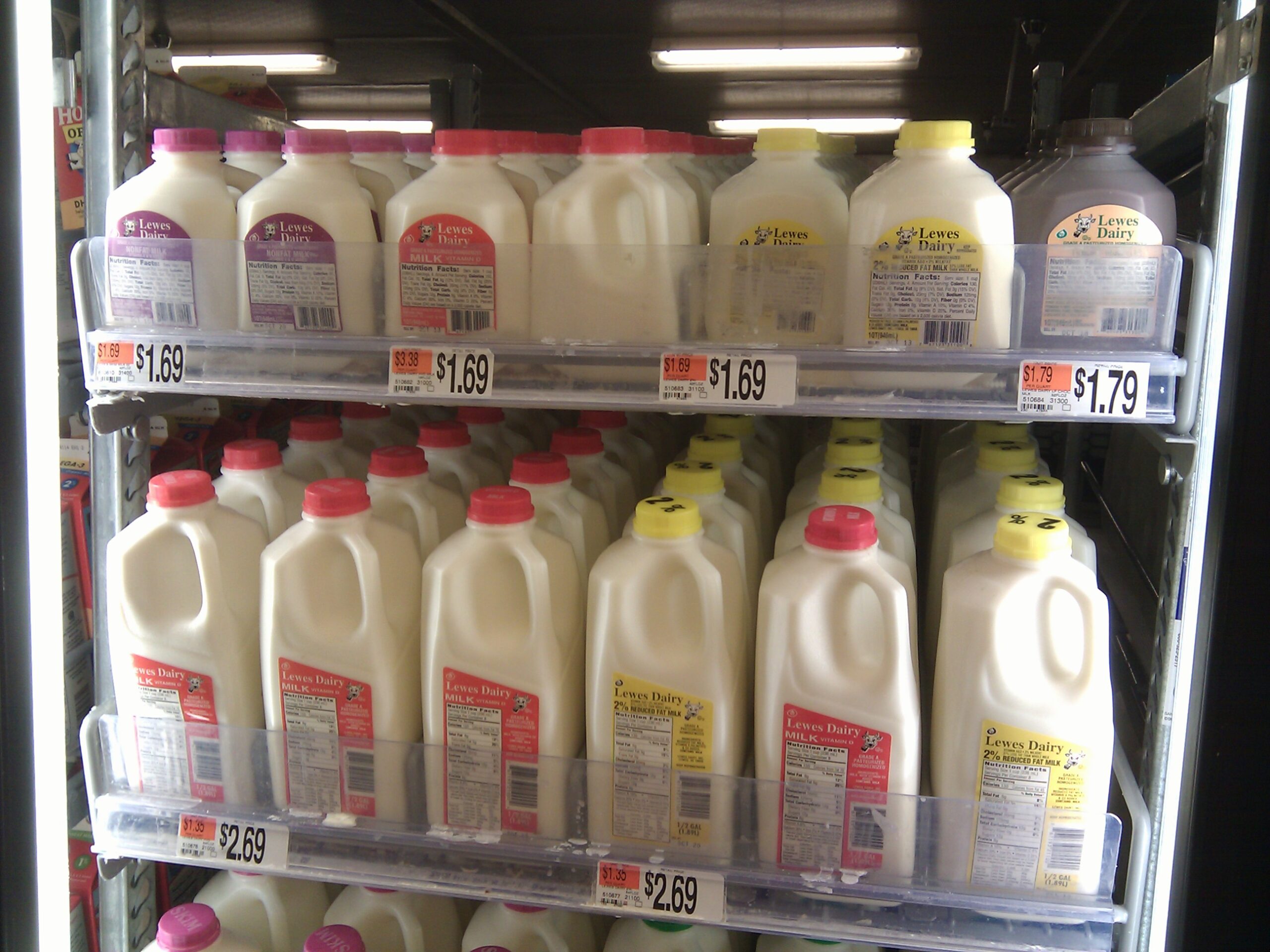Measuring Milk: Cups, Quarts, Gallons, and More
Milk is a vital ingredient in many recipes, beverages, and culinary creations. Accurately measuring milk is crucial for achieving the desired taste and texture in your final product. This guide explores the different units used to measure milk, conversion factors, and helpful tips for precise measurement.
Units for Measuring Milk
In the culinary world, milk is typically measured in:
- Cups: A cup is a common unit for measuring both liquid and dry ingredients. One cup is equal to 240 milliliters (mL).
- Fluid ounces (fl oz): A fluid ounce is a unit of volume specifically for liquids. There are 8 fluid ounces in one cup.
- Pints: A pint is larger than a cup and is equal to 2 cups or 16 fluid ounces.
- Quarts: A quart is even larger, containing 4 cups or 32 fluid ounces.
- Gallons: A gallon is the largest unit commonly used for measuring milk, containing 4 quarts, 16 cups, or 128 fluid ounces.
Metric Units:
- Milliliters (mL): The metric system primarily uses milliliters to measure liquids. One milliliter is equivalent to one cubic centimeter (cm³).
- Liters (L): One liter is equal to 1,000 milliliters.
Conversion Table for Milk Measurement
| Unit | Milliliters (mL) | Fluid Ounces (fl oz) | Cups | Quarts | Gallons |
|---|---|---|---|---|---|
| 1 mL | 1 | 0.0338 | 0.0042 | 0.0010 | 0.00026 |
| 1 fl oz | 29.57 | 1 | 0.125 | 0.03125 | 0.00781 |
| 1 cup | 240 | 8 | 1 | 0.25 | 0.0625 |
| 1 quart | 946.35 | 32 | 4 | 1 | 0.25 |
| 1 gallon | 3785.41 | 128 | 16 | 4 | 1 |
Source: https://www.nist.gov/
Tips for Accurate Milk Measurement
- Use measuring cups with clear markings for accurate reading.
- Adjust the measuring cup based on the amount you need. For small quantities, use a tablespoon or a measuring cup with ¼ cup increments.
- For dry ingredients like flour, spoon the ingredient into the measuring cup and level it off with a straight edge. However, for liquids like milk, fill the cup to the brim and then use a spoon to skim off any excess liquid at the top.
- If you don’t have a measuring cup, you can improvise using other household items. For example, an empty juice container often holds around 12 fluid ounces, which is equivalent to 1 ½ cups.
Frequently Asked Questions (FAQ)
How many cups are in a gallon of milk?
There are 16 cups in one gallon of milk.
Can I use a mug instead of a measuring cup for milk?
Mugs can vary significantly in size, so it’s not recommended for accurate measurement. It’s best to use a standard measuring cup for consistent results.
Is it okay to estimate milk measurement?
While small variations may not affect the final product significantly, it’s generally advisable to measure milk as accurately as possible, especially for baking or recipes where precise proportions are crucial.
By understanding these measurement units and using the provided conversion table, you can ensure you’re using the correct amount of milk in your recipes, leading to delicious and successful culinary creations.
Beyond the Basics: Milk Math and Additional Measurement Techniques
While cups, quarts, and gallons are the most common units for measuring milk in everyday cooking, there are situations where a deeper understanding of milk measurement is beneficial.
Milk Math: Conversions and Calculations
Knowing how to convert between different units and perform basic calculations with milk measurements can be empowering in the kitchen. Here are some helpful formulas:
- Converting between units: To convert from one unit to another, multiply by the conversion factor. For example, to convert 3 cups of milk to milliliters, multiply by 240 mL/cup: 3 cups * 240 mL/cup = 720 mL.
- Scaling recipes: If you need to adjust a recipe that calls for a specific amount of milk, you can use multiplication or division to scale the recipe up or down. For instance, to halve a recipe that requires 2 cups of milk, divide the quantity by 2: 2 cups / 2 = 1 cup.
- Finding a missing ingredient: Sometimes, you might have a recipe that specifies the final volume of the dish and the amount of other ingredients, but not the milk quantity. In such cases, subtract the volumes of the known ingredients from the total volume to find the amount of milk needed.
Alternative Measurement Techniques
While measuring cups are the go-to tool, there are alternative methods for measuring milk, particularly for smaller quantities:
- Tablespoons and teaspoons: For small amounts of milk, tablespoons ( Tbsp) and teaspoons ( tsp) are convenient options. There are 3 teaspoons in 1 tablespoon and 16 tablespoons in 1 cup.
- Kitchen scale: A kitchen scale can be a precise way to measure milk, especially for baking. Remember to set the scale to the appropriate unit (grams or milliliters) and use a container that tares (resets the weight to zero).
Important Note: When using a scale for measuring liquids, remember that the density of milk can vary slightly depending on factors like fat content. This might lead to minor discrepancies compared to volume measurements.
Choosing the Right Measurement Method
The best method for measuring milk depends on the recipe, the tools available, and the desired level of accuracy.
- For everyday cooking: Measuring cups are the most practical and user-friendly option.
- For small quantities: Tablespoons and teaspoons offer precision for small amounts of milk.
- For baking or recipes requiring high precision: A kitchen scale can provide the most accurate measurement.
By mastering these measurement techniques and understanding milk math, you can confidently navigate any recipe and achieve culinary success.






More Stories
Where to Watch USMNT vs Jamaica National Football Team
How I Met My Monster
How Should a Ring Fit